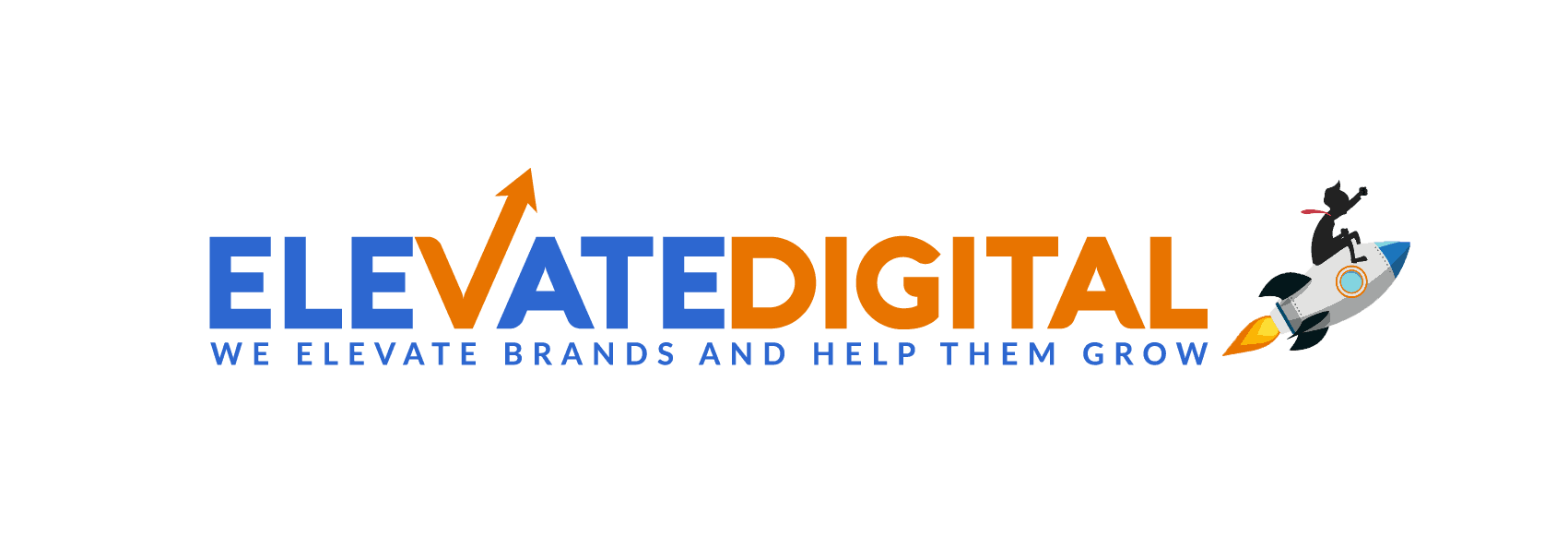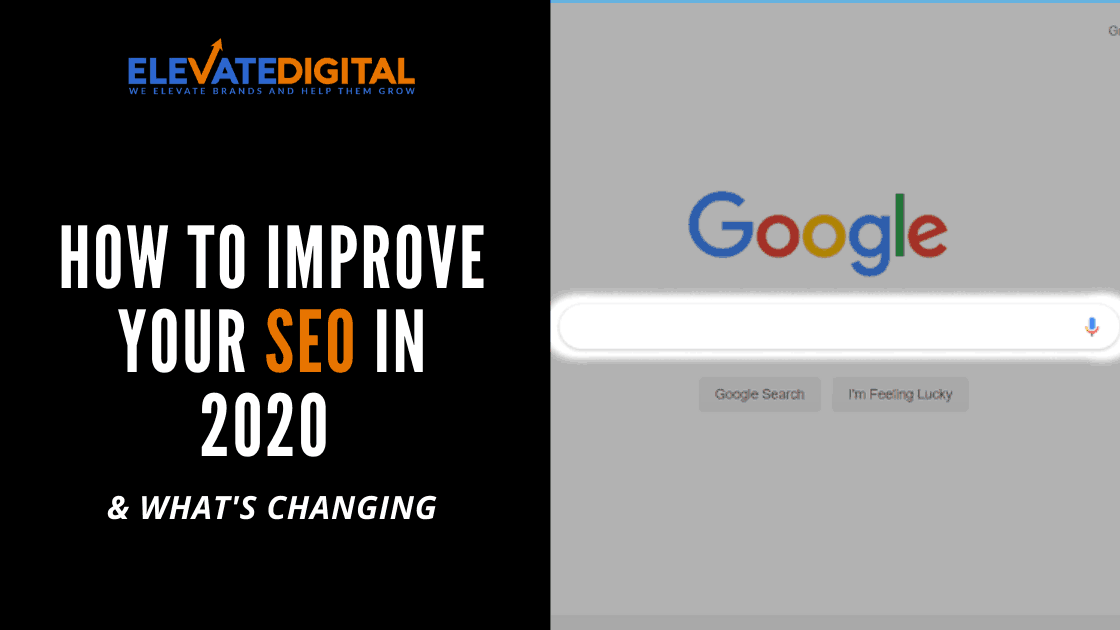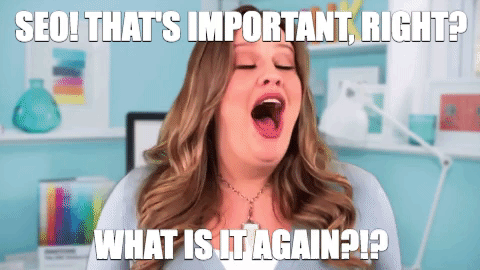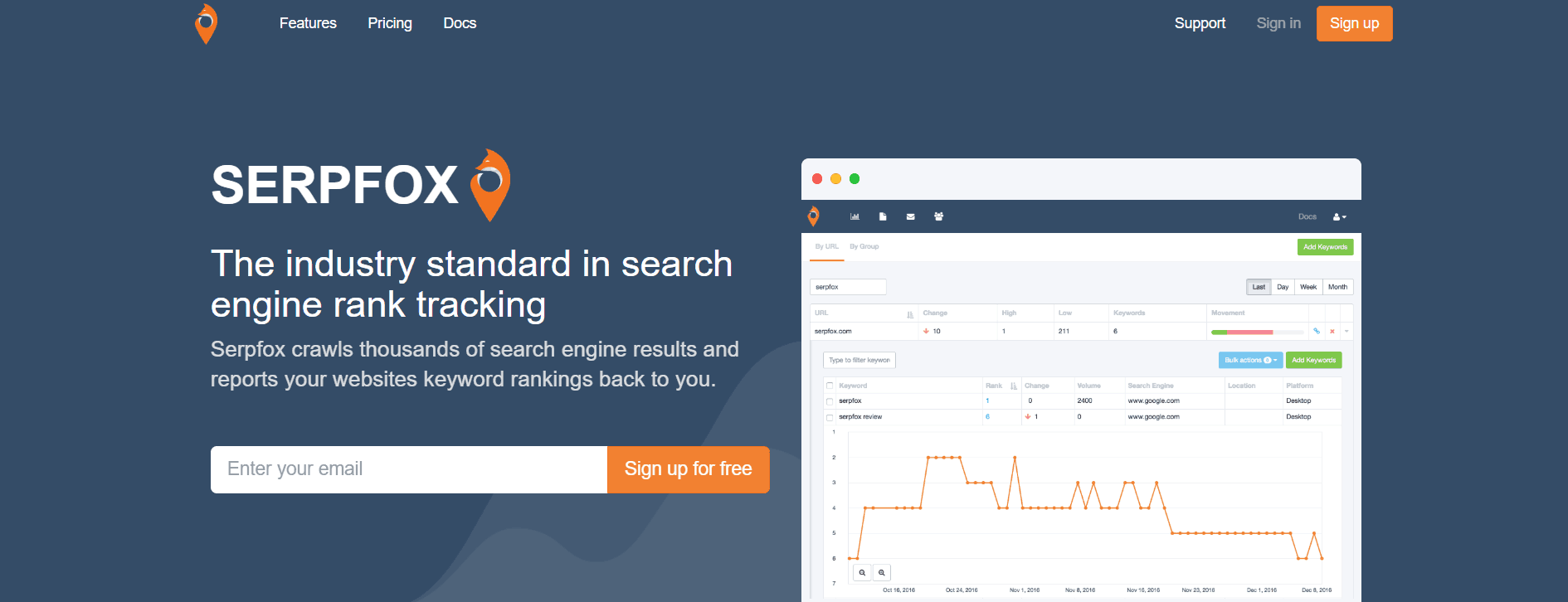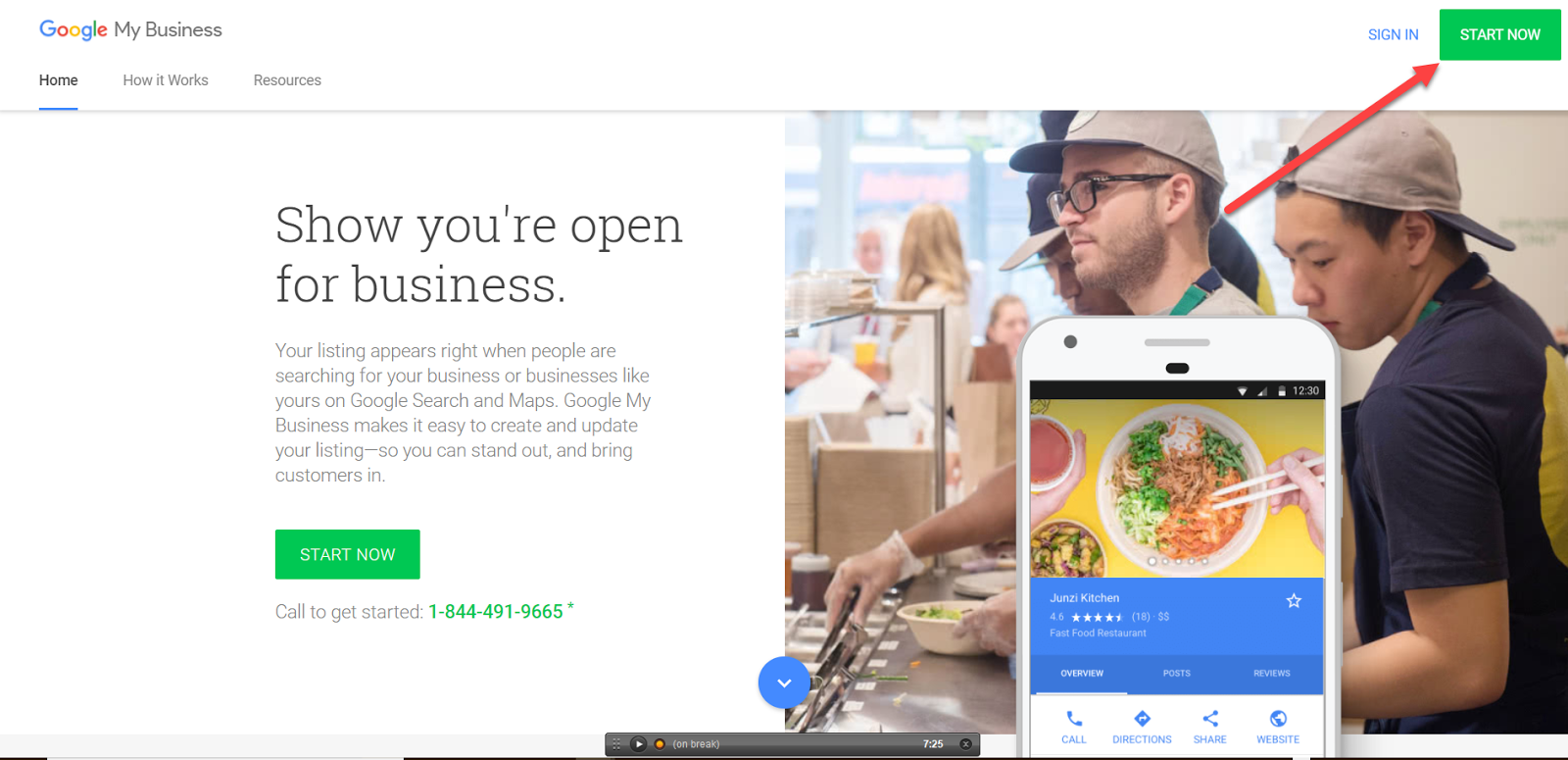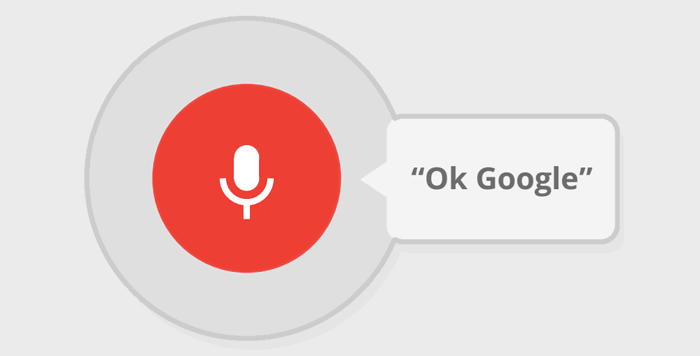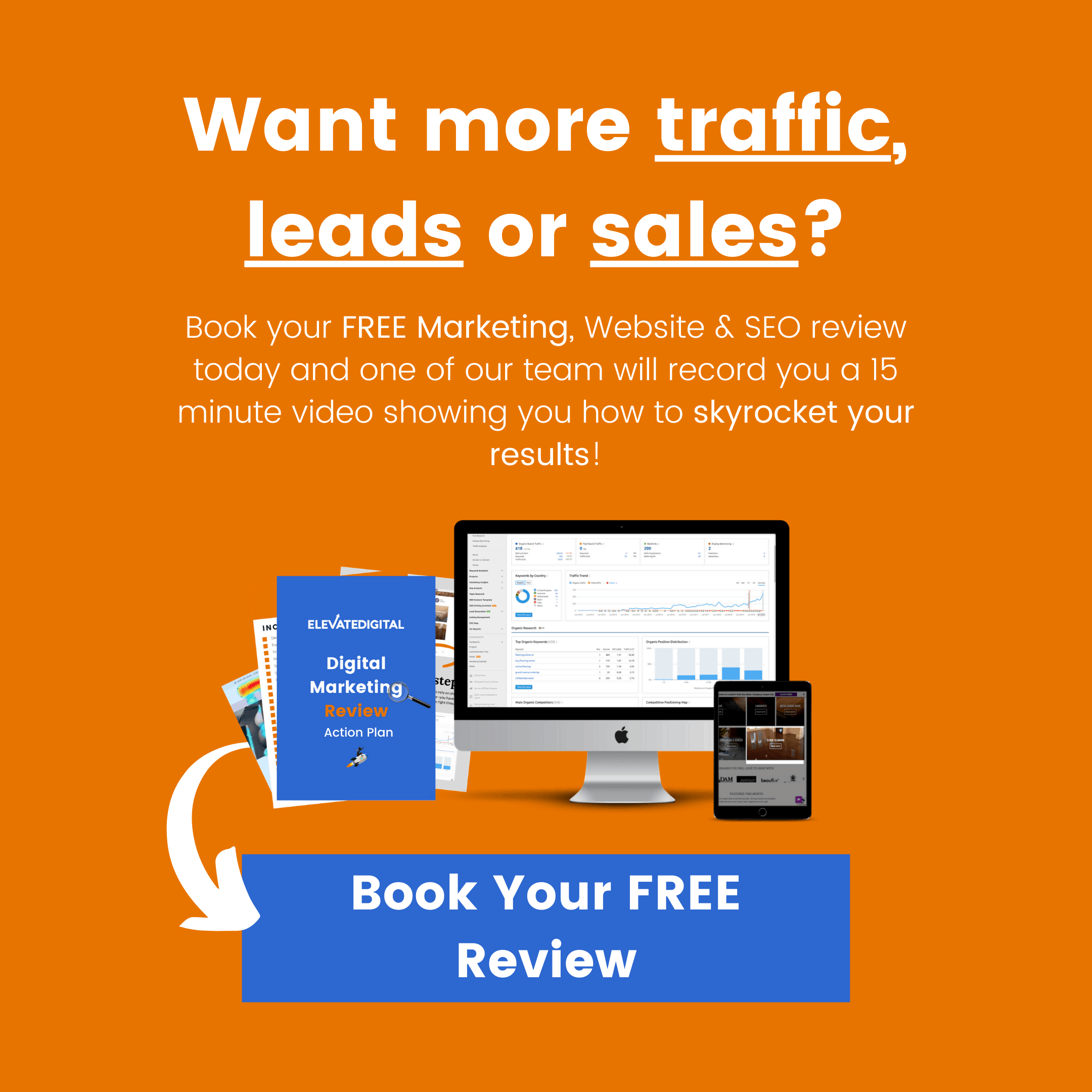Search Engine Optimisation (or SEO) is often looked at as a magical dark art.
As a business owner, you have likely heard about it before…
You’ve probably even been cold called or received spam emails from SEO companies telling you that they can perform SEO services for your business.
It’s important to understand however, that SEO itself is not a dark art. In fact, as a business owner, it can actually be your best friend! As long you understand the fundamental principles.
That’s exactly what we’ll be exploring here as well as looking at how you can get your business ranking in Google for 2020.
So why bother with SEO in 2020
The purpose of optimising your website for the search engines is so that you gain visibility to your target audience.
There’s been a lot of scaremongering around SEO…
In fact, it seems like every year, people declare the death of SEO.
When in reality, the opposite is true!
Make no mistake, SEO is going through some major changes in 2020! But if anything, it’s going to become more important than ever for some reasons we’ll explore later in this article!
But to start with, let’s just be honest about something. If you’re not visible (or audible) to your target audience; as a business, you’re going to struggle.
That’s the reason a quality SEO campaign can be so important. Even more so, when you consider, most people simply won’t go beyond the first page of the search results when they’re searching.
In fact, on average, over 70% of all searches go to the top 3 results! Just check out these findings by Brian Dean at Backlinko.
Just think about how you use search engines yourself – how many times do you go 5-10 pages into the results to get the answer that you’re looking for?
So what about PPC & paid advertising?
Whilst it’s still entirely possible to achieve incredible results from paid advertising campaigns. The fact is cost-per-clicks are rising as the competition increases and consumers are turning away from them.
In fact, a recent survey showed that around 40% of laptop users in the US are actively using ad-blockers!
All in all, this has left Search Engine Optimisation as a vital service that you need if you want to stand out from the crowd. It’s no longer a “nice to have”, it’s a “must have”.
And when used in conjunction with PPC & Re-Targeting campaigns, you’ll be able to quickly dominate your competition
What is Search Engine Optimisation?
In a nutshell, SEO is the process of helping search engines like Google to better understand the content and value of your website.
Of course, you do need to have good content in the first place. But we’ll come to that in more detail later on in this guide.
The 5 Key Stages on an SEO campaign
1. Keyword Research
If you want to improve your website SEO, it’s critical to get this stage right!
Every search begins with keywords. There are many free and paid tools that you can use on the Internet to carry out keyword research. With these tools, you’re looking for good opportunities for your business that you can target. As an example, we really enjoy using the free keyword research tool – Ubersuggest.
On the Ubersuggest website, you enter in a keyword phrase and choose the language/country that you’re targeting.
For our example below we’ve used “Plumber London” and English/United Kingdom.

TIP: Put yourself into the shoes of one of your customers. Write down 10 words or phrases that they would type into a search engine to find a business like yours.
In the search that we’ve performed here, we can see that the keyword “plumber london” has a monthly search volume of 4,400, which would be approximately 146 per day.
We can also see an estimated difficulty for ranking a website highly in the search engines and the same for paid advertising. Finally, the Cost Per Click (CPC) for paid advertising is estimated to be £6.54.
This means that people are paying this much, for just one click through to their business.
Now imagine you were able to rank your website organically for the same keyword.
Theoretically, you’d be potentially saving yourself just under £1,000 a day for those 146 clicks were you ranked at the top of Google.
It’s worth noting, these figures are estimated and can fluctuate over time. This is also a very broad keyword and we’d probably want to target something more specific for a PPC campaign.
TIP: Take the list of keywords that you’ve written down and run them through the Ubersuggest tool. Pay close attention to any that have an “easy” difficulty for SEO and don’t forget to look through the ‘Keyword Ideas’ section for related keywords that you may not have considered yet..
2. Checking Your Existing Rankings
Before making any changes to your website, you first need to know where your website is currently ranking for the list of keywords that you have put together.
Once you know your current rankings, you can then make a list of keywords that you can focus your efforts on, to achieve growth in the search engine results. If you try and make changes without knowing where you should focus your attention, you run the risk of wasting your precious time.
So, how do you look at where your website is currently ranking in the search engines? If you’re a sucker for punishment, you could open up a web browser (in incognito mode) and perform manual searches for each keyword. Then look at which page and position your website is showing in, if at all. There’s a better way though…
There are tools that exist online that will track where your website is ranking for the keywords that you are targeting.
One of our favourite solutions is SerpFox. It’s a great tool for tracking and monitoring where your website is ranking in the search engines.
They have a free account that allows you to monitor up to 10 keywords. The paid account which supports monitoring for up to 100 keywords is $10/month.
After signing up for an account, you can add your keywords into SerpFox and tell it which search engines you’d like to track them in. We’d recommend selecting Google as a minimum here. If your website is visible in the first 200 results for a particular keyword or keyword phrase that you’ve entered, you’ll be able to see this data shortly.
For any keywords where your website is not currently ranked in the top 10 positions, you’re not visible in the first page of Google – so these are the keywords that you want to focus on. SerpFox has an automated report feature built in, where it will send you scheduled reports on an ongoing basis.
There’s some details on how to do that on this help page, so take a few moments to get up weekly reports to your email address.
TIP: Create an account with SerpFox and add your keywords into the system. Give it a few minutes to pull in your positional data and then review your keywords list. For any keywords where you are not currently in positions 1-10, make a note of these as you will need to work on your website in order to make it more relevant for these keywords
Want Us To Help Improve Your SEO?
Book your FREE digital review today and we’ll check your website and your competitors for you! We’ll then record you a 10 minute video showing how you can increase your traffic, leads and sales!
3. Local SEO
For the majority of businesses who are reading this, your local area will be very important to you in terms of sales and new business.
Visibility in your local area can mean the difference between “okay” and “GREAT” sales. Let’s ensure you have better visibility with your local audience!
That’s why it’s so important to optimise your business for location-based searches with a local SEO strategy.
One of the best things you can do to help your business to be visible locally is to set up and optimise a Google My Business page.
Of course, these are helpful no matter your location – so even if you’re reading this and thinking that it’s not important for you because you don’t work with local clients, following these steps will still benefit your business.
Firstly, we need to make sure you don’t have a Google My Business page already.
Go to Google Maps and in the search box type in the name of your business, e.g. Joe’s Pizza London.
If your business appears here, then you have a Google My Business page already.
However, if it doesn’t appear, don’t worry, as you can set one up for free.
Head over to Google MyBusiness and click the green “Start Now” button.
When you first setup your page, you will need to follow the verification process. The standard verification process is via a postcard delivered to your business address within 14 days.
You may also be presented with an option to verify by phone or email.
Google Listing Optimisation Checklist
Once your page is verified, make sure you complete as much relevant information as possible. You should pay particular attention to the following:
● Business Name – Make sure you use your full legal business name.
● Business Description – This area lets you describe your business and let interested parties know more about you.
● Categories – Select categories that are relevant to your business.
● Address – This should be your business address and you should ensure that you have the same details on your website.
● Telephone Number – This should be your business telephone number and you should ensure that you have the same number visible on your website.
● Website URL – Enter your business website URL here.
● Opening Hours – Let people know when you’re open / available to assist them.
● Photos – This is one of the most important areas on the page and one that people neglect. Add your logo, some pictures of you / your team and photos / images of work that you have done for your clients.
4. On-Page SEO
In the simplest terms, on-page SEO is the process of optimising the pages of your website in order to increase their relevance to the search engines. The more relevance and authority that a search engine places on your page, the higher it will show in the search results.
This is one of the key areas of SEO for your business and it’s something that you have full control over with your website.
For keywords that are less competitive, it’s sometimes possible to achieve a ranking on the first page of Google from good quality on-page SEO alone.
If you have a WordPress website, we’d highly recommend download Yoast SEO. It’s a completely free plugin and give you some great tools to optimise your website, even for beginners!
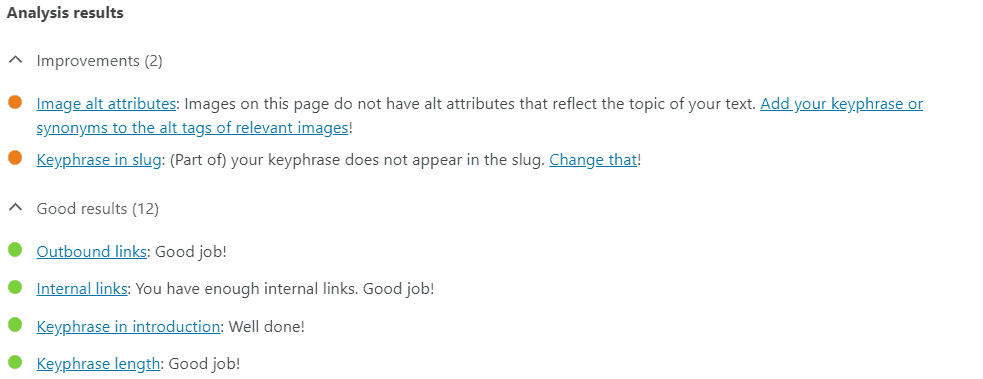
Let’s run through 12 important on-page SEO factors for your pages.
Some of these may need assistance from your web designer, but it’s a good idea for you to have some understanding about each of them first:
Focus Keyword
Every page should have a unique focus keyword. So, if you have a page that uses “Texas Roofing Specialist”, you should not use it as a focus keyword on another page.
Content
The quality and relevance of the content on a web page is the number one ranking factor in search engines. Your content should clearly fulfil the search purpose of the visitor. Make sure your focus keyword is used once in the first 100 words of the page. There’s a lot of weight applied to longer content (1000+ words per page).
Title Tag
Your title tag shows in the browser and is the main headline in the search results. The ideal length is 50-60 characters and you should always try to start it with your main keyword. Title tags are best written as a sentence.
Meta Description
The meta description is used by search engines as the description for search results in their indexes. Meta descriptions should be around 140-160 characters in length and you should include your focus keyword inside this content.
URL
Your page URLs should be search engine friendly and ideally include your focus keyword. Instead of ‘example.com/pageid=?123’ you would use ‘example.com/your-keyword’.
Header Tags
Your website should be using header tags. You may know these a <h1>, <h2> etc. Your page title should always use <h1> tags, as it’s the most important heading on the page. Sub-headings should use <h2> and if necessary <h3> or further tags.
LSI Keywords
Latent Semantic Indexing (LSI) keywords are a fancy way of saying related keywords. Make sure you sprinkle a few keywords that are related to your main focus keyword into your page content. This will help to increase the relevancy of your page.
Internal Linking
Ideally you will want to have 1-3 internal links on each page of content. An internal link is a link that points to another piece of content on your site.
Outbound Linking
Pages that link to an external piece of related content will typically rank higher in the search engines than one that doesn’t. If you are able to link to an external website on your page, you should do so. If it doesn’t make sense to do this (e.g. you’re working on a product or sales page) don’t worry too much.
Images / Video
Good use of attractive images and embedded video will increase the dwell time of a user. By dwell time, we mean the length of time that a user stays on your website. You want to minimise the chance of a user going straight back to the search results after landing on your page as Google can use this as a sign of a low-quality page.
Website Speed
The speed of your website is a ranking factor with the search engines. Slow websites are bad for users who are looking for information. Search engines such as Google will reward websites that load quickly. If your website takes longer than 2 seconds to load, it will typically need some optimisation work to improve the speed.
SSL (HTTPS)
There are many positive benefits of an SSL certificate. It creates trust with your visitors by displaying a padlock in their browser. You’ll also find that search engines use it as a ranking factor towards the trust and security of a website. If you don’t currently have an SSL certificate on your website, speak with your hosting company and make this a priority addition.
If you want to dive deeper into on-page SEO, there are many more ranking factors that you can take a look at, however the 12 we’ve listed above are some of the most important that you need to consider for your website.
If you work hard on making sure that each page of your website achieves each of the important ranking factors above, you’ll be a long way forward in your quest to make your website more visible in the search engines.
On-Page SEO Make sure your pages are optimised.
TIP: Take some time to go through each page on your website and assess whether they have in place the 12 important factors that we’ve listed for you here. For any pages that are missing the mark, make a note of these and put a plan of action in place to make positive changes that will improve your on-page SEO.
5. Content Marketing & Link-Building!
There’s no other way of looking at this, the quality, consistency and relevancy of the content on your website are the most important factors that will decide how the search engines treat it in their results.
A decade ago, SEO was more of a popularity contest. Whoever had the most links would show up higher in the search engines. Whilst backlinks (links from other websites that point to yours) are still valuable, the quality of the content on your website is most important.
Here are some great content marketing tools that can help with the content creation process.
What Content To Create
The struggle for most people is knowing what to create. Well this can tie into the keyword research stage we mentioned above but here’s a few more suggestion for getting inspiration around topics.
- Look at your most recent customer queries
- Use a tool like Buzzsumo to see the latest search/conversational trends in your industry
- Search for keywords relating to your industry using Answer The Public and see what people are searching for.
Or just use the autosuggest/autocomplete function when typing something into Google to see the most popular search terms…

Link Building
Quite frankly, this is a huge topic in itself which we won’t go into here. But in a nutshell, link building is the process of gaining backlinks to your website from external sources. This can come from a Digital PR approach, podcast appearances, social media mentions, guest blogging and many other sources.
Effectively, every time somebody links to your site, this sends a signal to Google to let them know your website is a good source of information. Over time this will boost the authority of your website and make it easier for you to rank in search.
This is one of the most critical and often time-consuming elements of any SEO campaign.
The Algorithm
Many years ago, people would buy thousands of spammy links from low-quality websites. This used to suffice in order to get your website ranked on Google.
Methods like this are now considered Black-Hat as they go against Google’s terms of service in order to manipulate results.
Google’s algorithm has also now become much smarter at detecting these. In fact, there are literally hundreds of ever-changing factors that the algorithm uses as a criteria for ranking websites.
Unfortunately, nobody knows the exact criteria (other than Google themselves) but assumptions can be made from test-data.
For example, Google is now factoring in the quality and reputation of the referring websites which has been proved from many tests!
For the most part however, they just want content that feels and sounds organic and is linked form relevant sites.
So if you’re a Yoga Studio and your backlinks are coming from gambling website, this is going to be a major alarm bell for Google!
In fact, using these methods can now actually cause your website more harm than good as Google will now penalise your site.
As such, if you find fully managed SEO services for under £1,000 a month, it’s worth doing some due diligence. As white-hat link-building campaigns are very involved, and complex process.
Other than manually sharing your content with your target audience or media outlets/bloggers in your industry.
There are tools like Ninja Outreach which can help you automate some of this outreach process:

Another great tool is a website called HARO (Help A Reporter Out). In a nutshell HARO connects industry experts with media publications and bloggers.
When you sign up, you’ll be sent daily email with topics that publishers are looking for help with or just comments on.
This can help you secure some highly specific, high quality links to your site. You can also land some mentions in major publications like Forbes, Time Magazine, and many more!
TIP: Review the content of your website with the keywords in mind that you picked out earlier in this guide. Are you giving the right message to your potential audience? Is there anywhere that you can improve your content by adding in more information, explaining the benefits of your product/service or using media such as images or videos?
Content Quality
Quality content encourages people to link to your content as a resource. This could be content on a page or in a blog post. Search engines such as Google LOVE content. They like content that is updated on a regular basis, hence why it’s great to have a source of regularly updated content, like a blog.
How can you improve the content on your website? Great question!
The first thing you need to look at is if the content is answering the type of question that a user is asking the search engine, when they’re looking for an answer. If a user comes through to your website when searching for an “emergency locksmith in London”, it’s no use if you are not open or you only cut new keys for locks.
The second thing that you need to consider is the length of your content.
Time and time again we see that the top websites ranking in Google for search terms have a much higher content length on their pages.
The average small business website is quite light on content, with some having just a few sentences or a couple of paragraphs on pages. You want to avoid this wherever possible as you don’t want the search engines to consider your pages to be low quality due to a lack of content.
TIP: Count the number of words on each of your pages. You can use a tool such as WordCounter , to paste in the URL of your page and view the number of words. If your pages have less than 500 words, take some time to review your content and look at where you could share more in-depth information with your target audience.
What SEO trends to look out for in 2020
The SEO landscape is constantly changing, fluctuating and evolving but 2020 is bringing some major changes. Particularly with the rise of voice and Google’s continued push for optimal user experience.
Here’s some key things to be aware of in 2020:
Rich snippets &structured markups
Rich snippets are effectively bits of code that help Google understand the content on your website.
These can help you show up in more detailed search results like securing the renowned “featured snippets” box on Google.
With Google optimising for user experience, this is likely to play a big-part in search over the coming year.
Optimising for voice search will become crucial
It’s estimated that around 50% of all searches could be done using voice by the end of 2020. Which means it’s critical your website is optimised for voice search.
Structured markups as mentioned above will have a big part to play in this but so will the way your content is written! We have an article coming soon on this so watch this space!
Google continue to make user experience and mobile-first key
The primary focus from Google right now is on creating a seamless and effortless user experience. They have already made a number of changes here, such as introducing a badge of shame for slow-loading websites; that show they mean business on this front and won’t tolerate websites that aren’t delivering the best for customers.
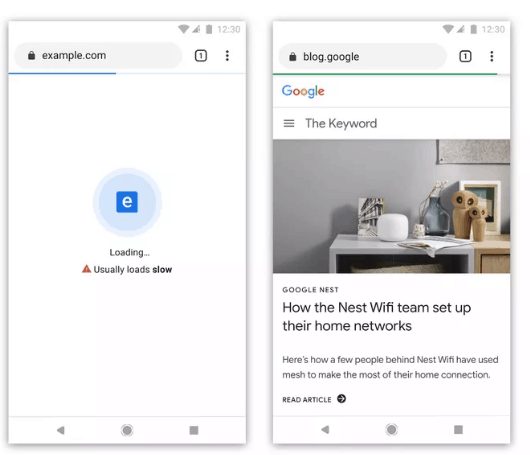
Hopefully that’s given you a better idea of what’s in store for this year and how you can utilise SEO for your business growth in 2020!
Remember, if you’d like a free review of your business to help take your growth to the next level. Be sure to book your FREE digital review today!
- Highly-Effective DTC Marketing Strategies & Examples - February 28, 2024
- How To Set Paid Media Marketing Budget - October 16, 2023
- The Ultimate Guide To A/B Testing - September 23, 2023
